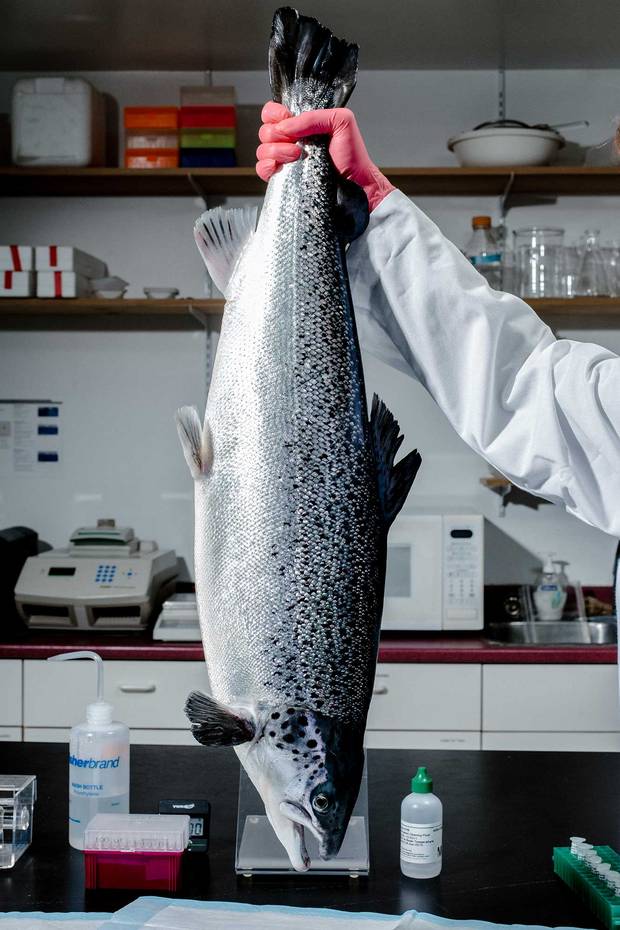
Alexi Hobbs
The slab of Atlantic salmon looks like any other—pink and flaky. Tastes like it, too. But the fish, which started as an experiment at a lab at Memorial University in St. John's, Newfoundland, is the first genetically modified animal ever to be approved for human consumption.
In the 1980s, researchers Garth Fletcher and Choy Hew were trying to see whether they could add a gene to Atlantic salmon that would allow farmed fish to better withstand the freezing winter conditions of the North Atlantic. The cold prevents salmon from growing, and in many cases will kill them. Almost all Atlantic salmon sold in supermarkets these days is the farmed variety.
Hoping for a remedy, they gave the salmon a growth-hormone gene from the Chinook salmon, the largest of the Pacific species, and added a promoter sequence from the eel-like ocean pout, enabling the fish to continuously produce a growth hormone all year. The result was the AquAdvantage salmon that reaches market size twice as fast as its wild counterparts—it takes just 18 months. And, unlike the farmed version, this new fish is raised in freshwater tanks on land, minimizing the risk of disease and contamination. To address concerns about the potential for inbreeding with wild species, the fish are also all sterile and female.
With wild salmon stocks in freefall and the global population projected to hit nine billion in 2050, aquaculture is expected to be at the forefront in feeding the planet. But it's been a tough 25 years for the American company, AquaBounty Technologies, that bought the rights to the fish.
Neither the U.S. Food and Drug Administration, which approves new food for human consumption, nor consumers, who tend to be wary of genetically modified products, knew what to make of the world's first GM animal. While the FDA had been approving GM crops for years, it had no precedent for animals. Republican Senator Lisa Murkowski of Alaska labelled the fish "fake." Activists and environmentalists wondered whether it was safe to eat and if it would contaminate wild stocks.
But in 2015, after examining years' worth of scientific data, the FDA finally approved the fish for sale (Health Canada followed in 2016). The cost of its long journey to market had been steep: AquaBounty racked up more than $100 million in net losses over the period it was trying to have the salmon approved, according to a recent financial disclosure. "We expect to continue to incur significant losses for the foresee-able future, and we may never achieve or maintain profitability," the filing reads.
This despite the fact that the global market for aquaculture is huge: In 2017, it was valued at $176.5 billion (U.S.) and has an annual growth rate of more than 4%, according to Research and Markets. Atlantic salmon is the second most consumed seafood product in the U.S., which imported $2.6 billion of it in 2016, according to the U.S. Department of Commerce. The Food and Agriculture Organization of the United Nations valued global production of farmed Atlantic salmon at $11.9 billion in 2015.
In the meantime, AquaBounty has said it will focus on wholesale and institutional markets. It is also expanding a hatchery on Prince Edward Island that will allow it to produce 250 metric tonnes of Atlantic salmon a year. While the AquAdvantage regulatory saga can be a cautionary tale for a company pursuing innovative food technology, it should not be a deterrent for scientists, says Garth Fletcher, the fish's creator. "Canada has to keep up with what's going on in the world," he says. "It's an international competition here. If Canada doesn't keep going forward, some other country will."

Alexi Hobbs